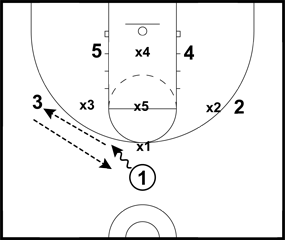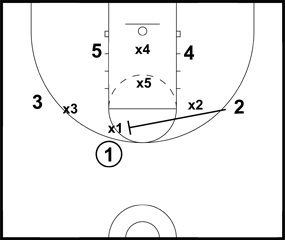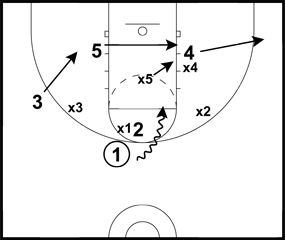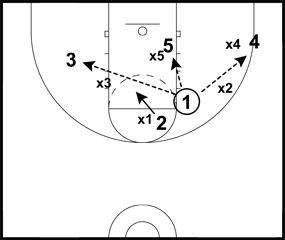Zone Play - Ball Screen Versus 1-3-1 Zone Defense
This is an effective play that uses a ball screening action to get easy shots. You will often see this play used against a 2-3 zone or 3-2 zone, but rarely does anybody show you how to use it against 1-3-1 zone defense.
The key is to get the zone offense balance using a reversal, then using a ball screen to keep the defense from covering their responsibilities.
This is an excerpt from the ebook Beating the Zone - 75 Set Plays to Score Against Zone Defense

1 might need to dribble towards 3 to draw the defender and make the entry pass.

2 will set the screen on the top defender.

1 will try to split the gap getting the ball into the lane.

When 1 turns the corner, it's important to make the correct read. In this diagram, 1 is open and should shoot. If X4 does not cover his corner responsibility, 1 should pass to 4. If X5 does not cover his low post responsibility, 1 should pass to 5. In most cases, the corner will be open. 1 hits 4 in the corner, then 4 can either shoot or pass to 5 sealing X5 high for a lay up.
What do you think? Let us know by leaving your comments, suggestions, and questions...
|
||||||||||||||||||||||||




 Facebook (145k Followers)
Facebook (145k Followers) YouTube (152k Subscribers)
YouTube (152k Subscribers) Twitter (33k Followers)
Twitter (33k Followers) Q&A Forum
Q&A Forum Podcasts
Podcasts